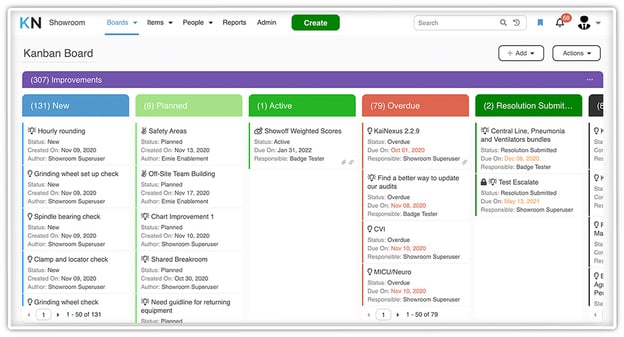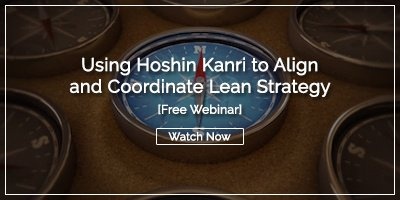 Lean process management is a method for building a company culture that supports continuous improvement. It involves a long-term approach to daily work that encourages small, incremental changes in process operations to improve quality and efficiency.
Lean process management is a method for building a company culture that supports continuous improvement. It involves a long-term approach to daily work that encourages small, incremental changes in process operations to improve quality and efficiency.
The primary objective of Lean process improvement is to create value for the customer by optimizing resources and creating an uninterrupted workflow based on near real-time customer demands. In addition, the approach seeks to minimize or eliminate all waste of resources, effort, and time by documenting each step in a business process and then removing or reducing steps that do not create customer value. The concept of Lean is rooted in manufacturing, but it has been adapted to fit almost every industry.
Lean process management is centered on:
- Understanding value from the viewpoint of the end customer.
- Eliminating or minimizing all waste in the creation of value.
- Continuously improving products, processes, and people.
The Lean methodology fosters a sense of shared responsibility and leadership. The focus on continuous improvement means that every employee can contribute meaningfully to the business's success. This approach to management provides a structure for building an organization that is constantly adapting, solving problems, and improving productivity.
Lean process management has its roots in the Toyota production system, which started following World War II. Toyota developed the five principles of Lean management to decrease the number of process steps that were not producing value. As a result, the practice became known as the Toyota Way. By adhering to these Lean principles, Toyota made significant improvements in cost efficiency, cycle time, and productivity.
The 5 Principles of Lean Process Management
The Lean approach embraces five core principles that managers use as guidelines to improve processes. They are:
- Identify customer value
- Map all value streams
- Create an uninterrupted workflow
- Operate with a pull system
- Practice continuous improvement
Identify Customer Value
The first step in Lean process management is finding a problem that the customer would like solved and creating a product or service that provides the solution. The product or service must be something for which the customer will happily pay. Any activity or process that does not add worth, usefulness, or importance to the final product or service constitutes waste and should be a target for elimination.
Map the Value Stream
Value stream mapping is the process of documenting the organization's workflow, including all tasks, processes, and people that contribute to creating the end product for the customer. Value stream mapping (VSM) visualizes process operations and helps managers identify the teams and people responsible for evaluating, measuring, and improving each process. Effective value stream mapping makes it clear which activities do not bring value to the product or service. Managers can then begin the effort to reduce waste.
Create an Uninterrupted Workflow
Creating an uninterrupted or continuous workflow requires that each team's outputs move smoothly, preventing bottlenecks or interruptions that may happen in a cross-functional operation. Many organizations achieve this using a Lean management technique called Kanban that uses visual cues to trigger action. This makes it easy to communicate between teams so that each activity takes place when and only when it is needed.

Operate With a Pull System
Operating with a pull system effectively ensures that the workflow remains continuous and helps teams deliver outputs faster and more efficiently. In addition, with a pull system, new outputs are created only if there is a demand for them. As a result, storage costs are reduced, and overhead is minimized.
Practice Continuous Improvement
The first four principles are essential to the Lean process management methodology. However, the final principle of continuous improvement is the bedrock upon which it all sits.
Achieving continuous improvement requires using various techniques that help document what an organization is currently doing, what it needs to do instead, and what challenges may arise in achieving the desired state. Every member of the organization is expected to help make the process they operate better. However, there is not a straight line between how things are done today and perfection; obstacles will arise, which is why every employee must constantly be on the lookout for improvement opportunities.
The Benefits of Lean Process Management
Organizations that practice Lean benefit by achieving continuous improvement across all functions and work processes from the C-suite to the front lines. Managers gain specific advantages, including:
Smarter business processes: With a pull system in place, work is only performed when there is a real-time demand for it.
More effective use of resources: The pull system also means that the organization only uses material resources when required by actual customer demand.
Improved workforce focus: When wasteful activities are removed, the workforce can focus their effort and attention on only those activities that produce value.
Increased efficiency and productivity: With this improved focus, workers become more productive and efficient because unnecessary tasks are not creating noise.
Lean Tools and Techniques
Organizations, including Toyota, General Electric, and others, have developed specific tools and techniques to support Lean process management. Some of the most popular include:
The PDSA Improvement Cycle
PDSA stands for Plan, Do, Study, Adjust. It is a structured approach to problem-solving and improvement. First, the team identifies the target process or problem and creates a hypothesis for the solution during the planning phase. Next, they implement the proposed solution. During the study phase, key performance metrics are measured and carefully tracked. If the change results in improvement, the standard work is adjusted; if not, the solution might be tweaked. Once document improvement results, the cycle can begin again.
Daily Huddles
Many Lean organizations use daily huddle meetings or calls to organize the improvement work that is planned for the day or discuss newly identified opportunities for improvement. These huddles used to be guided by physical huddle boards, but today's technology provides a much more effective and robust way to manage huddles and improvement using software designed for the job.
Gemba Walks
Gemba walks are a Lean practice where supervisors, managers, and leaders go to the workplace to observe, show respect, and ask questions. First-hand observation is an excellent way to access workflow interruptions and problems with the pull system. Importantly, process changes are not made during the Gemba walk but only after deliberation and usually a PDSA cycle.
Strategy Deployment
Strategy deployment, sometimes also called Hoshin Kanri or Policy Deployment, aligns an organization around the most critical breakthrough goals and strategic objectives. Leaders use a technique called Catchball to gain input and feedback on the strategic plan. The organization's annual and long-term objectives are cascaded to ensure that all improvement work furthers the strategy. Each individual has goals and objectives that are in step with the purpose and mission of the organization.
All of this leads to an organization that is more agile and is better able to meet customer requirements quickly and efficiently. Thus, Lean management leads to a production system that enhances a company's overall performance and profitability.
![[Watch Now] How to Leverage Lean for Long-Term Success](https://no-cache.hubspot.com/cta/default/326641/eb5ac7b8-b040-48b7-810e-1589561ffff9.png)




Add a Comment